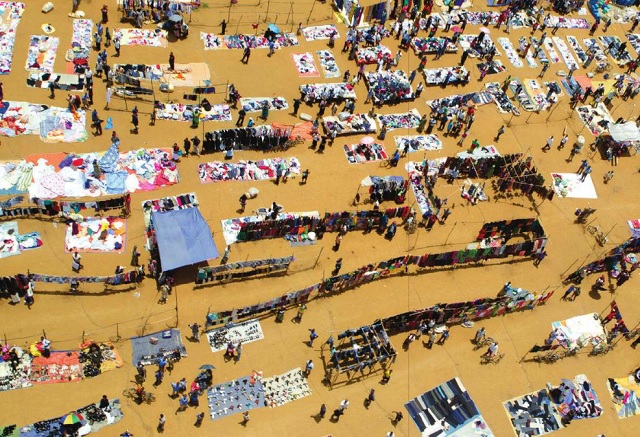
Second-hand ban strategy: A peep into alternatives to banning importation of second-hand clothing
Trade in second-hand clothing is big in Uganda. In markets and shops in most towns and villages, trade in second-hand clothes improves people’s access to clothing, supports livelihoods, and contributes to national and local government tax revenue.
Now, however, Uganda wants to implement a National Textiles Policy first introduced in 2009. Under it, trade in secondhand clothes would be phased out by 2018.
The policy and a `Made in Africa Bill, 2015’ have for years been sitting in parliament without being passed. However, interest in it was recently awakened after the U.S. Ambassador to Uganda, Deborah Malac, commented on it in a meeting with the Speaker of Parliament, Rebecca Kadaga.
Malac reportedly warned Ugandan MPs not to pass a law banning importation in Uganda of second hand clothing because, according to her, passing such a law would impact negatively on the African Growth and Opportunity Act (AGOA), the trade pact under which America and Uganda opened their markets to specified products from either country.
But Uganda is not alone in moving to ban the importation of second-hand clothing from the West. Up to 12 African countries are among 31 worldwide that have banned imports of secondhand clothing.
Although it is pushed as a nationalistic move to spur import-substitution industries, some experts are expressing the need for caution in implementing it.
Godfrey Asiimwe, a development studies lecturer at Uganda’s oldest institution of higher learning; Makerere University in Kampala, has researched on the commodity. He says trade in second-hand clothing is not only a Ugandan or African affair. He says the trade dates back to the 1800s and is spread all over the world.
From India, to the Russian Federation, and to Africa’s small towns and villages, trade in second-hand clothes thrives.
The clothes originate from developed countries- USA, UK, Germany, and the Netherlands- and dominate local market stalls in both developed and developing countries globally.
Known by different names on the African continent, mupedzanhamo (where all problems end) in Zimbabwe, Obroni Wowu (clothes of the dead white man) in Ghana, Mitumba (bundles) in Kenya, and Mivumba (second hand) in Uganda, the clothes account for majority of the sales in many of these developing countries because of their affordability.
In the Sub-Saharan Africa, they account for over 50% of the clothing market. In Uganda, it accounts for 81%, according to Andrew Brook, in his book `Clothing Poverty: The Hidden World of Fashion and Second Hand Clothes’.
“At the moment, second hand clothes are not only in Uganda, they are all over even in developed countries,” Asiimwe told The Independent in an email in reference to among others Malaysia, Poland, Canada, and Pakistan.
He says, however, that the International Monetary Fund’s policy to liberalise economies in developing countries in the 1980’s, meant that barriers to trade such as import taxes and quotas, which had protected local industries, especially in the Sub-Saharan Africa, were removed.
This resulted to a surge in the volume of second-hand clothes into many developing countries including Kenya, Malawi, Mozambique, Nigeria, Rwanda, Senegal, Swaziland, Tanzania, Zambia and Zimbabwe.
“But while in other countries there is regulation, Uganda adopted the version of ‘wholesale’ liberalisation with the consequence of too much dumping of second hand and counterfeit to the detriment of domestic production.”
Job losses
The flow of second-hand clothing from the western world -as well as the availability of cheap, new garments from East Asia- has had a negative effect on local textile industries in many countries, Brook says, citing Ghana as the best example as its local textile and clothing employment fell by 80% 1975 to 2000.
 The Independent Uganda: You get the Truth we Pay the Price
The Independent Uganda: You get the Truth we Pay the Price



